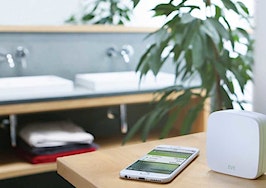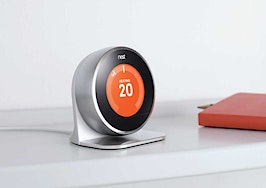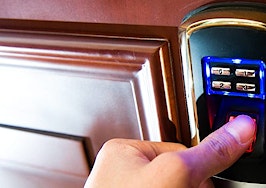Takeaways:
- Agents’ knowledge of smart home devices can set them apart in buyers’ and sellers’ minds.
- The availability of these devices is increasing, while costs are dropping.
- More buyers expect smart home devices to already be installed.
With smart home devices slated to become common household items within the next two years, real estate agents who are savvy when it comes to this technology may help themselves stand out.
“As an agent, your knowledge and awareness of these devices will serve as a differentiator,” said Chad Curry, managing director of the Center for Real Technology at the National Association of Realtors.
In a recent article, Curry outlined some of these devices, including Nest, a thermostat system that learns an individual’s behaviors and adjusts temperatures accordingly.
Smart lock company August provides a way to send virtual keys to other users’ smartphones. The device installs on the back of a door and connects to phones via Bluetooth. Access with traditional keys is still permitted.
Cree is offering 60-watt bulbs that last 25,000 hours and cost $15 apiece. The lights are controllable from an individual’s phone via hubs, which cost around $50. Three bulbs plus a hub would run $100.
“You can very inexpensively help the homeowner improve lighting and efficiency,” Curry said. “They will remember that and it will make you stand out.”
It is estimated between 26 billion and 50 billion smart home devices will be connected by 2020 – with the most common devices focused on cooling and heating, home access and lighting, Curry noted.
According to a recent survey of 4,000 adults by Coldwell Banker Real Estate and CNET, 81 percent of respondents said they would be more likely to buy a home if smart technology were already installed.
Additionally, more buyers will expect smart home technology to already be installed when considering the purchase of a home.
A panel at Inman’s Tech Connect in early August cited rising intelligence and declining costs within the smart home sector. The panel suggested that devices such as automated window treatments, which shut when the sun hits, and refrigerators that remind us when its time to buy more milk will become a reality in the next five years.







